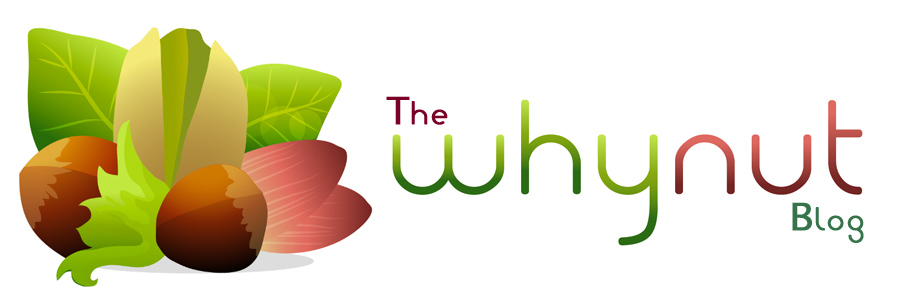Recipe Exclusively for WhyNut by Littleloaf
(makes 12)
If you’ve been making a lot of custard or ice cream
recently, these little cakes are the perfect way to use up all those leftover
egg whites. Light and bite-sized, financiers make for an elegant tea-time treat
with their signature flavour of nutty brown butter. They also make a
wonderfully simple dessert – as shown here - drizzled with a simple summery
sauce, topped with whipped cream and a scattering of crunchy pistachio nuts.
Ingredients:
For the financiers
90g unsalted butter
120g icing sugar
40g plain white flour
Pinch salt
4 large free range egg whites
85g Why Nut pistachio paste
50g ground almonds
12 - 24 raspberries (depending on size)
For the raspberry
sauce
120ml water
100g caster sugar
250g raspberries
To serve (optional)
Whipped cream
Pistachios, chopped
Method:
For the financiers: Preheat the oven to 180 degrees C. Lightly
grease 12 small financier moulds (a cupcake/muffin pan will also work well).
· Melt the butter in a small saucepan over a medium heat.
· Once melted, continue cooking until the milk solids begin to brown and the butter smells nutty.
· Remove from the heat, strain through a mesh sieve into a small bowl and set aside to cool.
· Sift together the icing sugar, flour and salt.
· In a large bowl, whisk the egg whites until lightly frothy.
· Whisk in the pistachio paste and ground almonds, followed by the cooled brown butter.
· Lightly fold in the flour and icing sugar mixture with a large spoon.
· Divide the batter between your moulds and place one or two raspberries in the centre of each, depending on how much space you have.
· Bake for 12 – 15 minutes until lightly brown and slightly springy to the touch.
· Remove from the oven and allow to cool in the moulds for 5 minutes before turning out. Dust with icing sugar.
For the raspberry
sauce
· In a medium pan, bring the water and sugar to the boil.
· Lower the heat and continue to cook until the mixture thickens, about 3 minutes.
· Add the raspberries and cook for another minute, then blend the whole mixture until smooth before passing through a fine mesh sieve to remove any last bits.
To serve
· Place financiers on individual plates. Pour over the raspberry sauce and top with a little whipped cream and chopped pistachios, if using.
Tips:
The fat in
the pistachio paste replaces some of the butter in this recipe, but is not a
substitute. The combination of ground pistachios and nutty brown butter is what
gives these lovely little cakes their amazing flavour.
It’s very easy to burn brown butter so cook it carefully, never using more than a medium heat to achieve a rich, amber colour. As soon as it looks done, remove from the heat and strain: If you leave the butter in the pan it will continue to cook and may burn.
Pistachio and raspberry is a perfect combination for the summer months. When the weather gets a little colder, why not try substituting the pistachio paste with Why Nut hazelnut paste, adding a few chocolate chips to each financier instead of the raspberries?
It’s very easy to burn brown butter so cook it carefully, never using more than a medium heat to achieve a rich, amber colour. As soon as it looks done, remove from the heat and strain: If you leave the butter in the pan it will continue to cook and may burn.
Pistachio and raspberry is a perfect combination for the summer months. When the weather gets a little colder, why not try substituting the pistachio paste with Why Nut hazelnut paste, adding a few chocolate chips to each financier instead of the raspberries?




.jpg)
















.jpg)








